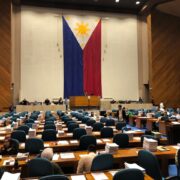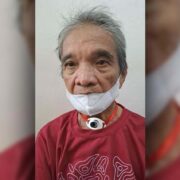Music matters

There is a touching viral video of a frail woman in a wheelchair who is gracefully moving her hands to Tchaikovsky’s “Swan Lake.” Marta Cinta González Saldaña, a former ballet dancer who was suffering from Alzheimer’s, had already forgotten the many decades of her life, but still remembered the choreography tied to the music. Her case is just one of the many instances where music was used to trigger memories and positive emotional reactions among patients with Alzheimer’s. Though Saldaña passed away in 2019—the same year the footage was taken—the clip continues to resonate deeply with people and helps raise awareness about how valuable music is for those affected by the disease.
Humanity has always intuitively understood the power of music. It enriches our celebrations, comforts us in times of loss, and keeps us company in both the most sacred and mundane moments of our lives. And in recent decades, there has been growing scientific research on the transformative impact of music on our physical, emotional, and psychological well-being.
Early musical exposure is linked to improved developmental outcomes in children. Research from the University of Southern California’s Brain and Creativity Institute found that music can accelerate brain development, specially literacy and language skills. Music, as a medium for self-expression, also enables children to better articulate emotions that may be difficult to convey, fostering emotional awareness and self-regulation skills.
Music engages multiple brain regions simultaneously and the mind greatly benefits from the sustained stimulation. For older adults, learning to play a musical instrument is one of the best ways to protect their neurological health because it promotes the formation of new neural pathways, improving memory, attention, and problem-solving skills. This leads to better cognitive health and lowered risk of dementia.
Neuroscientists are also studying how the power of music to elicit brain response could be used as a rehabilitative tool for people with stroke or Parkinson’s disease. While the research is in its early stages, results have been quite promising. MRI scans of test patients show that even when they do not seem to be showing any physical reaction to the music being played, their brain’s motor systems are stimulated and responding internally.
Emotionally, music can heal and uplift. For those facing a difficult time, music helps individuals process their feelings and experiences, facilitating release and catharsis. Clinical studies have also demonstrated that combining music therapy with standard treatment significantly reduces symptoms and improves daily functioning in patients with major depression. Participating in music-related group activities, such as choirs or concerts, further enhances its therapeutic impact by strengthening social bonds, making a person feel more connected.
Despite its proven value, music education is often treated as expendable. Music, alongside arts, physical education, and health, are labeled as minor subjects, giving the perception that these fields are not as important to a child’s education. Given that many schools, both public and private, are faced with strained and limited budgets with resources mostly being allocated to address learning challenges related to math, science, and English, many feel they have no choice but to offer half-baked programs just for the sake of compliance. This deprives many students of the opportunity to be enriched by a good musical education that children from privileged backgrounds are exposed to.
For over three decades, Casa San Miguel has effectively addressed this challenge. Founded in 1993 by renowned violinist Coke Bolipata, the organization’s mission is to harness the transformative power of music, performance, and visual arts to uplift communities. Situated in San Antonio, Zambales, their flagship initiative, the Cuerdas Cuadros school program, provides scholarships for intensive arts education for talented children from low-income families across the province.
Last Friday, I had the privilege of attending their 31st-anniversary fundraising benefit concert. The Pundaquit Virtuosi, a string ensemble featuring Casa’s finest students and alumni—who have toured both locally and internationally—performed alongside Joey Ayala, the Madrigal Singers, and soprano Nerissa de Juan. Proceeds from the event directly benefited over 200 young musicians and artists who are part of Casa’s various programs. It was inspiring to witness how a thoughtfully designed arts and music program can unlock life-changing opportunities.
Programs like Casa San Miguel remind us why music must remain a core part of the teaching curriculum. While there is a pressing need for increased donor support to sustain similar initiatives, schools must also creatively and proactively leverage free online resources to provide students with meaningful musical exposure, even in the face of budget constraints. A high quality, well-rounded education is not just about stimulating and equipping the mind, it is also about nourishing a person’s spirit. Music should be seen and upheld as an integral ingredient of that.
—————
eleanor@shetalksasia.com


















